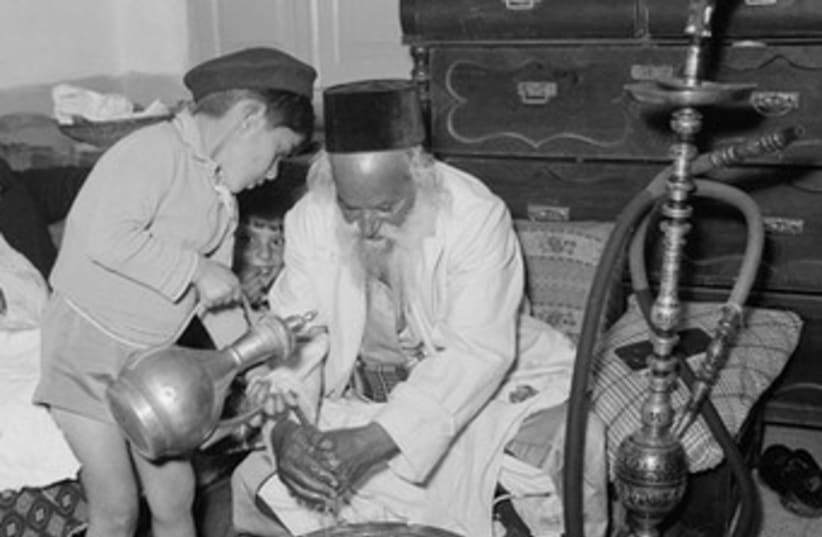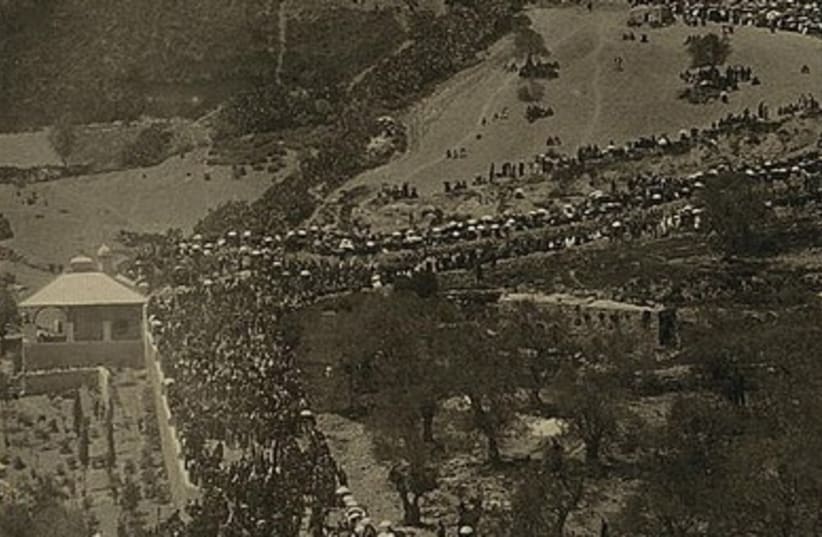
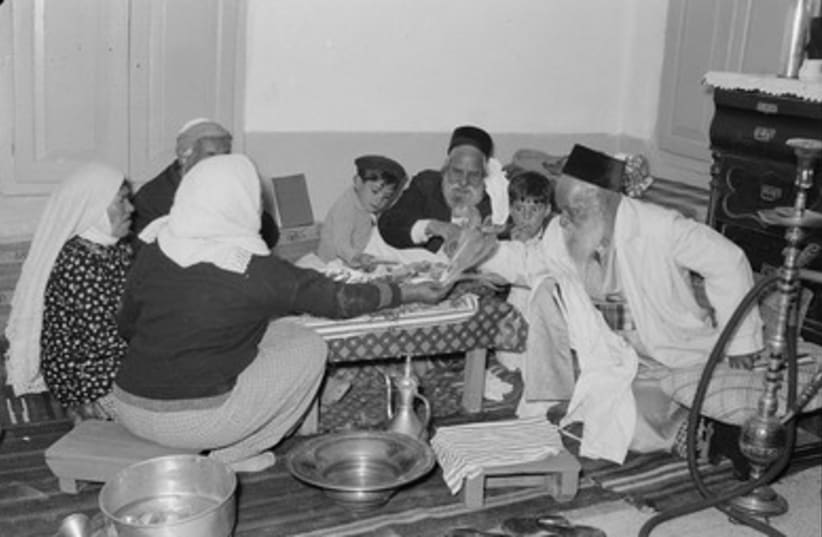
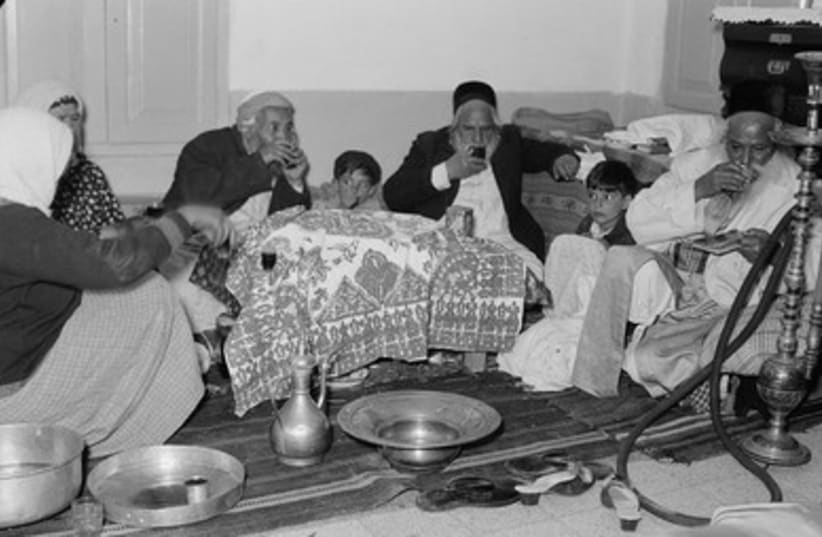
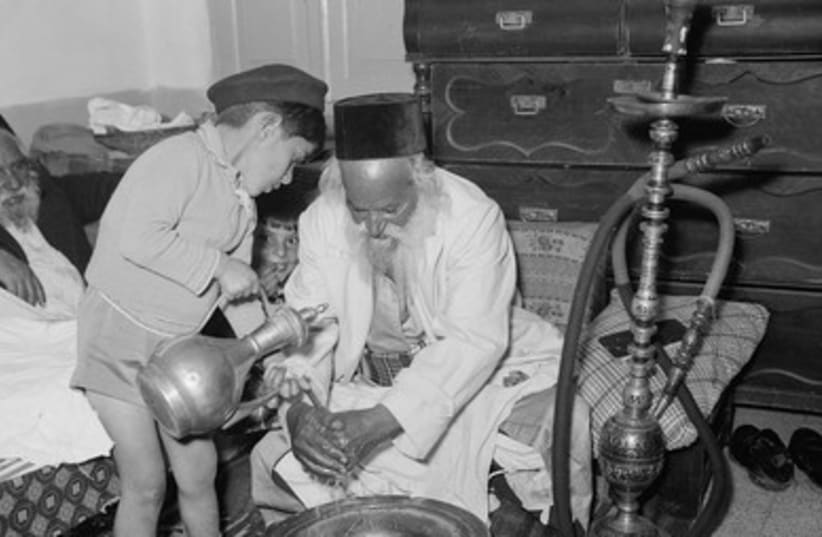
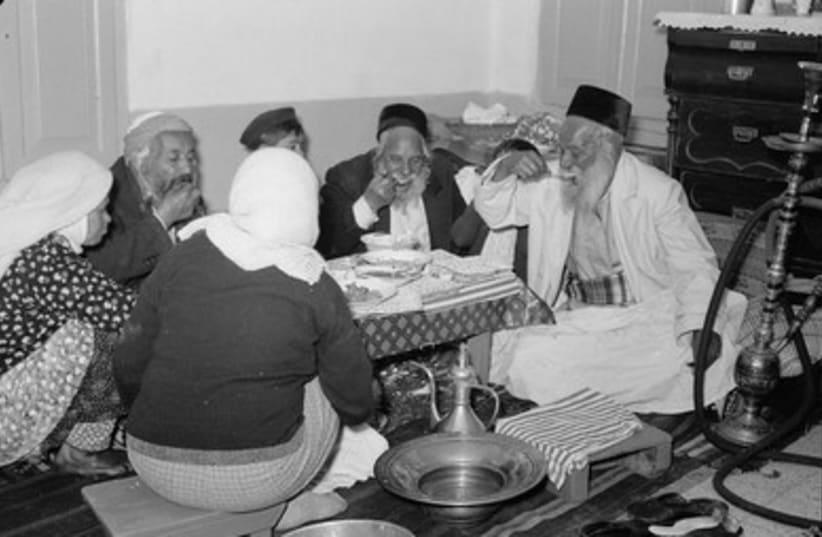

Passover is one of the three pilgrimage festivals mentioned in the Bible along with Sukkot and Shavuot. Historians and rabbinic literature refer to hundreds of thousands of pilgrims who filled the streets and alleyways of Jerusalem, bringing sacrifices to the Temple. Today as well, Jews from all over the world and from all over Israel make their pilgrimages to the holy city.The Library of Congress photographic collection includes the 100-year-old picture of the "throngs" visiting Jerusalem. The collection also contains a series of photographs of Yemenite residents of Jerusalem celebrating their Passover seder in 1939. Note their low table.The Yemenite community has a tradition of a soft matza, similar to Middle East pita or laffa bread, which they bake daily during Passover. Discussing the local matza, an ancient traveler to Tza'ana in Yemen quoted his Yemenite host, "There is no requirement that the matzos be dry and stale because they were baked many days before Pesach. Every day we eat warm, fresh matza. "The traveler reported, "I enjoyed their special kind of matza -- it was warm, soft and didn't have the usual burnt sections which was present in every matza I had ever eaten until then."Unfortunately for the 1939 Yemenite family, it appears that the only matza available to them was the square and stale machine-made matza.More photos can be viewed at http://www.israeldailypicture.com
